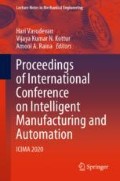Abstract
Stress relaxation cracking (SRC) is a high-temperature failure mode occurring in equipment, operational in industries at high service temperature for a long time. SRC has been noticed in thick-walled welded components of austenitic stainless steel, ferritic stainless steel, heat-resistant steel, and nickel-based alloys for many years. Understanding SRC phenomenon is necessary to improve the lifetime of equipments and to save resources. In order to improve the lifetime of the equipments, understanding SRC mechanism and its characteristics is important. In this paper, past experience of SRC in austenitic stainless steel has been reviewed to understand why and how SRC occurs and what are the major causes for cracking. Preventive measures can be taken that could avoid stress relaxation cracking and extend the lifetime of the equipment’s working at high temperature.
Access this chapter
Tax calculation will be finalised at checkout
Purchases are for personal use only
References
Pan J-H, Fan Z-C, Zong N-S (2016) Research on weld cracking of TP321H stainless steel pipeline under elevated temperature. Int J Press Vessels Pip 148:1–8
Ghalambaz M et al (2017) A case study on failure of AISI 347H stabilized stainless steel pipe in a petrochemical plant. Case Stud Eng Fail Anal 9:52–62
Li Y et al (2019) Stress-relief cracking mechanism in simulated coarse-grained heat-affected zone of T23 steel. J Mater Process Technol 266:73–81
Kant R (2018) Stress relief cracking susceptibility in high temperature alloys
Yoon KB, Yu JM, Nguyen TS (2015) Stress relaxation cracking in 304H stainless steel weld of a chemical reactor serviced at 560 °C. Eng Fail Anal 56:288–299
Phung-On I (2007) An investigation of reheat cracking in the weld heat affected zone of type 347 stainless steel. Dissertation, The Ohio State University
Unnikrishnan R et al (2016) Investigating plastic deformation around a reheat-crack in a 316H austenitic stainless-steel weldment by misorientation mapping. Procedia Struct Integr 2:3501–3507
Van Wortel H (2007) Control of relaxation cracking in austenitic high temperature components. In: Corrosion 2007, NACE International
Ghalambaz M et al (2017) A case study on failure of AISI 347H stabilized stainless steel pipe in a petrochemical plant. Case Stud Eng Fail Anal 9:∇–∇62
Nawrocki JG et al (2003) The mechanism of stress-relief cracking in a ferritic alloy steel. Weld J NY 82(2): 25–S
Van Wortel JC (1998) Relaxation cracking in the process industry, an underestimated problem. Plant Mainten Manag Life Perform 637
Thomas Jr RD (1984) HAZ cracking in thick sections of austenitic stainless steels-II. Weld J 63(12):355
Shoemaker Lewis E et al (2007) Fabricating nickel alloys to avoid stress relaxation cracking. In: Corrosion 2007, NACE International
Nawrocki JG et al (2003) The mechanism of stress-relief cracking in a ferritic alloy steel. Weld J NY 82(2):25–S
Kuhn B et al An advanced method for evaluation of strain-age/stress-relaxation cracking susceptibility of welded joints
Klueh RL, Edmonds DP (1986) Chemical composition effects on the creep of Type 316 and 16-8-2 stainless steel weld metal. Weld J 65(6):156s–162s
Author information
Authors and Affiliations
Corresponding author
Editor information
Editors and Affiliations
Rights and permissions
Copyright information
© 2020 Springer Nature Singapore Pte Ltd.
About this paper
Cite this paper
Dayalan, I., Frank Crasta, P., Pradhan, S., Gupta, R. (2020). A Review on Stress Relaxation Cracking in Austenitic Stainless Steel. In: Vasudevan, H., Kottur, V., Raina, A. (eds) Proceedings of International Conference on Intelligent Manufacturing and Automation. Lecture Notes in Mechanical Engineering. Springer, Singapore. https://doi.org/10.1007/978-981-15-4485-9_44
Download citation
DOI: https://doi.org/10.1007/978-981-15-4485-9_44
Published:
Publisher Name: Springer, Singapore
Print ISBN: 978-981-15-4484-2
Online ISBN: 978-981-15-4485-9
eBook Packages: EngineeringEngineering (R0)

